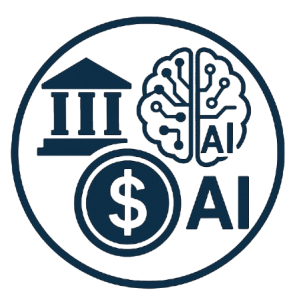Public Spending: What It Is and Why It Matters
Have you ever wondered where your tax money goes? Or why some countries have better roads, schools, or healthcare systems than others? The answer often lies in public spending, also known as government expenditure. In simple terms, public spending refers to the money spent by the government on various goods and services. Think of it as the government’s way of investing in the nation’s well-being and future. This includes everything from funding education and healthcare to building infrastructure and providing social welfare programs. Understanding public spending is crucial because it has a direct impact on the economy, society, and even your own pocketbook. It’s not just about paying taxes; it’s about understanding how those taxes are used to create a better society for everyone. So, let’s dive in and explore the fascinating world of public spending!
What Exactly is Public Spending? Breaking It Down
Public spending is essentially the disbursement of funds from the government’s budget to provide public services and implement development policies. It’s a broad term that encompasses a wide range of activities. A significant portion goes towards essential services like education, ensuring that everyone has access to quality schooling. Healthcare is another major area, covering everything from hospitals and clinics to public health initiatives. Infrastructure projects, such as building roads, bridges, and public transportation systems, also consume a large chunk of the public budget. Social security and welfare programs, like unemployment benefits and pensions, provide a safety net for those in need. Then, there’s defense spending, which covers the military and national security. Furthermore, public spending includes administrative costs, such as salaries for government employees and the operation of government agencies. All these components collectively contribute to the functioning of society and the overall well-being of its citizens. It’s a complex system with many moving parts, but it’s essential for a functioning and prosperous nation.
Types of Public Spending: A Closer Look
To better understand public spending, it’s helpful to categorize it into different types. One common classification is based on the function it serves. For instance, education spending aims to improve literacy and skills, while healthcare spending focuses on improving public health. Another classification is based on the economic impact. Some spending, like infrastructure projects, stimulates economic growth by creating jobs and improving productivity. Other spending, like social welfare programs, aims to reduce income inequality and provide a safety net. Recurrent expenditure refers to spending on day-to-day operations, such as salaries and maintenance. Capital expenditure, on the other hand, refers to spending on long-term investments, such as infrastructure and equipment. Another way to categorize spending is by level of government. Central government spending is managed by the national government, while local government spending is managed by regional or municipal authorities. Each type of public spending plays a distinct role in shaping the economy and society, making it crucial to analyze its effectiveness and efficiency. For more, see government budget office reports.
The Impact of Public Spending on Economic Growth
Public spending is a powerful tool that can significantly influence economic growth. Strategic investments in infrastructure, such as roads, bridges, and transportation networks, can improve productivity and reduce transportation costs for businesses. This, in turn, can lead to increased economic activity and job creation. Similarly, investments in education and healthcare can boost human capital, making the workforce more skilled and productive. A well-educated and healthy workforce is essential for innovation and economic competitiveness. Public spending can also stimulate demand during economic downturns. Government spending on infrastructure projects or tax cuts can inject money into the economy and encourage businesses and consumers to spend more. This can help to stabilize the economy and prevent a recession. However, excessive or poorly targeted public spending can also have negative consequences. For example, wasteful spending or inefficient bureaucracy can drain resources and hinder economic growth. Also, high levels of government debt can crowd out private investment and lead to higher interest rates. Therefore, it’s crucial to manage public spending wisely and ensure that it is used effectively to promote sustainable economic growth.
Public Spending and Social Stability
Beyond economic growth, public spending plays a critical role in maintaining social stability. Social welfare programs, such as unemployment benefits and food assistance, provide a safety net for vulnerable populations during economic hardship. This helps to prevent social unrest and maintain social cohesion. Furthermore, investments in education and healthcare can reduce inequality and improve social mobility. When everyone has access to quality education and healthcare, regardless of their income or background, it creates a more level playing field and reduces social tensions. Public spending can also promote social inclusion by supporting programs that target marginalized groups, such as minorities and people with disabilities. These programs can help to address historical injustices and create a more inclusive and equitable society. However, it’s important to design social programs carefully to avoid creating dependency or disincentivizing work. A well-designed social welfare system should provide a safety net without undermining individual responsibility and initiative. Read more about social safety nets and their effect on society.
Public Spending and Income Redistribution: Fairer Society?
One of the key goals of public spending is to redistribute income and reduce inequality. Progressive taxation, where higher earners pay a larger percentage of their income in taxes, is a common way to fund social programs and redistribute wealth. These funds are then used to provide services and benefits to lower-income individuals and families. Public spending on education, healthcare, and housing can significantly improve the living standards of those who are less fortunate. Furthermore, targeted social programs, such as cash transfers and food stamps, can provide direct assistance to those who need it most. By redistributing income, public spending can help to create a more equitable society where everyone has a fair chance to succeed. However, the extent to which public spending should be used for income redistribution is a subject of ongoing debate. Some argue that high levels of taxation can discourage work and investment, leading to slower economic growth. Others argue that a more equitable distribution of income is essential for social justice and long-term economic stability. The optimal level of income redistribution is likely to vary depending on the specific circumstances of each country.
The Future of Public Spending
As we look to the future, public spending will continue to play a crucial role in shaping our societies and economies. Addressing challenges such as climate change, aging populations, and technological disruption will require significant investments in infrastructure, education, and research. Governments will need to find innovative ways to finance these investments while maintaining fiscal sustainability. This may involve raising taxes, cutting spending in other areas, or exploring new sources of revenue. Furthermore, it’s essential to improve the efficiency and effectiveness of public spending. This requires better planning, monitoring, and evaluation of government programs. Technology can play a crucial role in improving public service delivery and reducing administrative costs. For example, e-government platforms can streamline government processes and make it easier for citizens to access services. Ultimately, the future of public spending will depend on our ability to make wise choices and prioritize investments that will benefit society as a whole.












